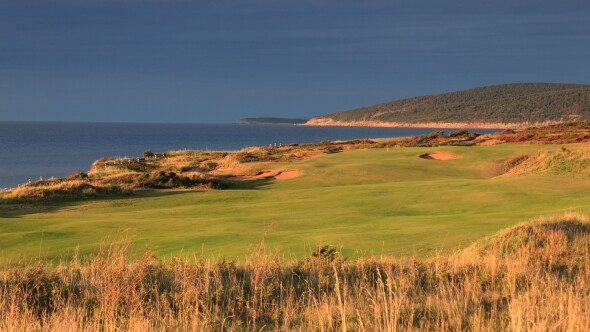At Herndon Centennial Golf Course, Egg Karne is killing it. Just to walk into the clubhouse of this municipal layout in the Washington, D.C. suburb of Herndon, Va. is to have your senses overwhelmed – by the odors from the kitchen as they prepare the menu’s Filipino cuisine.
Herndon is a lovely municipal layout - well groomed, and with a good pace of play. But what makes it stand out in the midst of tough golf market competition is the food cuisine that’s available all day in the otherwise very conventional clubhouse. You can’t beat their savory, spicy breakfast sandwich: Longanisa sausage, cage-free egg and a thick slice of cheese on a brioche. It’s enough to miss your tee time for another one. Small wonder they also do a brisk take-out business. At lunch the to-go bags of food are lined up on the counter awaiting non-golfing call-in customers to claim their orders.
Good food is good for the golf business. It’s also a way to draw in traffic from the vast majority of the population that doesn’t play golf. In an era when the game is under considerable pressure to improve its bottom line, what better way to enhance the appeal of a facility than by working offering quality in an area that everyone engages in – eating.
That’s what Diana DeLucia is focusing on. The Australian-born photographer and fashion publicist has become a leading spokesperson on behalf of quality food at golf facilities. Her main platform is a glossy quarterly publication called “Golf Kitchen,” which touts the efforts of leading chefs and country clubs.
She has also made a name for herself with two related coffee-table books that focus on elite country cuisine. “Golf Club World, Behind the Gates” (2013) takes readers inside the dining rooms and kitchens of a wide range of clubs, including ultra-private enclaves like Sebonack Golf Club in Southampton as well as popular public venues such as Cog Hill Golf Club in Lemont, Illinois and Mirimichi Golf Course in Millington, Tennessee.

DeLucia’s follow up book, “Golf Kitchen” (2017), includes profiles of leading clubhouse chefs along with their best-known recipes. Her favorite plate in the volume? ”Oh, it has to be what Robert Lee created at Bay Hill Club & Lodge in Orlando, she says. “Arnold Palmer’s Chicken Pot Pie. Everybody loves that dish.”
Her point is that good food at a golf course doesn’t have to be haute cuisine. “Golf dining is different than fine dining,” she says. “You’ve got a repeat clientele, often under time constraints, so a chef has to have the skill and talent to be a family player, know your foods – everything from a fantastic hamburger to fine dining on demand. Ego has to leave the door. You might have a prepped a four-course meal but need to be ready to serve scrambled eggs. It doesn’t matter whether it’s braised oxtail ravioli or French fries. It has to be served with the same care and respect.”
DeLucia’s perspective is based less on playing golf than in appreciating the service side of the golf industry. Raised on a tomato farm in Queensland, she moved to Melbourne after high school, where she studied photography, did talent casting for television and worked in the modeling industry before moving to New York City. There she became embedded in corporate photography before shooting regularly for fine dining magazines, including a regional industry insider, “New York Restaurant,” that she also wrote for and designed until the 2008-09 recession took its toll.
A period of professional soul searching followed as she explored the full scope of the culinary sector. A number of New York’s finest chefs wound up at country clubs, among them, Anthony Giacoponello, whose credentialed included training in Switzerland, stints at Lespinasse and Le Cirque in Manhattan. From there he landed in the clubhouse at Sebonack, where the standard turn around time from wait staff order to table delivery is eight minutes.
With the encouragement of Sebonack’s owner and founder, Michael Pascucci, DeLucia decided to launch a magazine and affiliated website (www.golfkitchen.com) featuring the world of clubhouse cuisine. Along with stories, recipes and personality profiles, the magazine promotes industry’s collegiality by sponsoring events at which leading chefs gather to exchange ideas, have fun and compete against one another in food and golf.
The first such international gathering took place this past April 26-29 at the Four Seasons Resort Punta Mita, Mexico, drawing 19 chefs and affiliated golfers from clubs throughout the U.S., Mexico-Caribbean and South America. “Golf Kitchen.” Next up on the calendar is an inaugural culinary excellence awards dinner set for Oct. 4 at Edgewood Country Club in River Vale, N.J. Besides celebrating the trade, the goal is to launch a Golf Kitchen Foundation to help support interested young chefs who want to learn the about the golf-clubhouse nexus.
That’ll mean learning the entire gamut of the trade, from nouvelle cuisine up in the clubhouse to healthy hand-held lunch in the hallway house. The golf kitchen, as it turns out, serves everyone.











